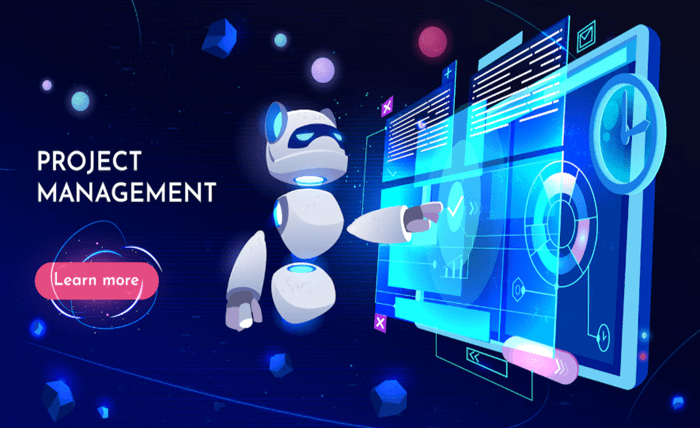Mabl is a groundbreaking AI-native test automation platform that revolutionizes how software teams create, execute, and maintain tests, delivering high-quality software with minimal effort. Tailored for modern development workflows, Mabl seamlessly integrates into continuous integration and continuous deployment pipelines, offering comprehensive testing capabilities across web, mobile, API, accessibility, and performance domains. Its intelligent features, such as auto-healing tests and agentic workflows, position it as a transformative tool for teams striving to accelerate innovation while maintaining exceptional quality standards. By leveraging artificial intelligence at its core, Mabl empowers organizations to streamline testing processes, reduce maintenance overhead, and ensure robust software releases in today’s fast-paced digital landscape.
<>The Core Capabilities of Mabl
p>Mabl’s foundation is built on years of AI research and development, making it a pioneer in intelligent test automation. Unlike traditional tools that rely heavily on manual scripting, Mabl offers a dual approach, catering to both non-technical users and seasoned developers. For those with limited coding expertise, its low-code interface simplifies test creation through intuitive visual workflows. This democratizes testing, enabling business analysts and quality assurance professionals to contribute effectively. Meanwhile, developers proficient in coding can leverage JavaScript to craft complex test scenarios, ensuring flexibility for diverse team needs.The platform unifies multiple testing disciplines into a single, cohesive system. Whether it’s validating a web application’s user interface, ensuring a mobile app performs flawlessly across devices, verifying API functionality, checking accessibility compliance, or measuring performance under load, Mabl handles it all. This unified approach eliminates the need for disparate tools, reducing complexity and fostering a streamlined workflow. By centralizing testing activities, teams can focus on delivering value rather than managing fragmented solutions.
A standout feature is Mabl’s auto-healing capability, powered by machine learning. When application interfaces change—such as a button’s identifier shifting due to a design update—traditional tests often fail, requiring manual intervention. Mabl’s AI detects these changes and automatically adjusts test scripts to align with the updated application, significantly reducing maintenance efforts. This self-healing mechanism ensures tests remain reliable, even as applications evolve rapidly in agile environments.
Harnessing AI >Harnessing AI for Smarter Testing
ont-weight: 400;">Artificial intelligence is woven into every aspect of Mabl’s testing lifecycle, from test creation to execution and maintenance. The platform’s Test Creation Agent uses natural language processing to interpret requirements or user stories, generating test suites with minimal human input. For example, a product manager can describe a feature in plain English, and Mabl will translate it into executable tests, drastically reducing the time spent on test authoring. This capability bridges the gap between technical and non-technical team members, fostering collaboration and speeding up development cycles.During test execution, Mabl’s AI optimizes the process by prioritizing tests based on historical data and risk assessments. It identifies critical areas of the application that are prone to defects, ensuring they are tested thoroughly while minimizing redundant runs. This intelligent prioritization reduces execution time, enabling faster feedback loops in continuous integration pipelines. Additionally, Mabl’s Auto Test Failure Analysis (Auto TFA) dives into test failures, pinpointing root causes and suggesting resolutions. This feature transforms debugging from a time-consuming task into a streamlined process, allowing teams to address issues swiftly.
Visual Assist is another AI-driven innovation, enhancing test reliability by focusing on visual elements. Rather than relying solely on code-based locators, Mabl uses computer vision to identify and interact with UI components, even when their underlying structure changes. This approach mimics human interaction with the application, making tests more robust against UI modifications. By combining these AI capabilities, Mabl ensures that testing is not only faster but also more accurate, aligning closely with real-world user experiences.
Unlocking Benefits for>Unlocking Benefits for Development Teams
ht: 400;">The adoption of Mabl brings transformative benefits to development teams, enabling them to achieve more with less effort. One of the most significant advantages is accelerated release cycles. By automating repetitive testing tasks and reducing maintenance overhead, Mabl allows teams to push updates to production faster without compromising quality. This speed is critical in competitive markets where rapid iteration can be a differentiator.Reduced maintenance is another key benefit. Traditional test automation often requires significant upkeep, with studies estimating that up to 50% of a QA team’s time can be spent updating scripts to match application changes. Mabl’s auto-healing and intelligent adaptation cut this burden dramatically, freeing teams to focus on strategic initiatives like feature development or exploratory testing. This efficiency translates into cost savings, as fewer resources are needed to maintain a robust testing suite.
Collaboration is enhanced as Mabl’s intuitive interface and AI-driven insights make testing accessible to all team members. Developers, testers, and product managers can work within the same platform, sharing results and feedback seamlessly. For instance, companies like Workday have leveraged Mabl to achieve near-complete test coverage, ensuring their applications meet stringent quality standards while fostering cross-functional teamwork. This collaborative environment promotes a culture of shared responsibility for quality, aligning teams toward common goals.
Quality improvements are evident in the platform’s ability to catch defects early and consistently. By integrating with CI/CD pipelines, Mabl ensures that every code commit is tested automatically, preventing issues from reaching production. Its comprehensive coverage across testing types—functional, accessibility, and performance—ensures that applications are thoroughly vetted, enhancing user satisfaction and reducing post-release fixes.
Mabl’s Unified Testing ApproachMabl’s Unified Testing Approach
bl’s strength lies in its ability to consolidate diverse testing needs into a single platform. It supports web applications through integrations with tools like Playwright, a powerful framework for browser automation favored by developers for its reliability and speed. For mobile testing, Mabl accommodates both iOS and Android platforms, ensuring apps perform consistently across devices and operating systems. API testing is equally robust, with Mabl validating endpoints for functionality and performance, critical for microservices-based architectures.Accessibility testing ensures compliance with standards like WCAG, making applications usable for all users, including those with disabilities. Performance testing evaluates how applications handle load, providing insights into latency, throughput, and resource usage. By covering these areas within one platform, Mabl eliminates the need for teams to juggle multiple tools, reducing complexity and training requirements.
The platform’s cloud-native architecture enhances scalability. Teams can run tests in parallel across multiple environments, leveraging cloud resources to handle peak loads during major releases. This elasticity ensures that testing keeps pace with development, even as project demands grow. Additionally, Mabl’s integrations with tools like Jenkins, GitHub Actions, and Jira embed testing seamlessly into existing workflows, creating a cohesive development ecosystem.
Strategies for Implementing and Adopting Mab>Strategies for Implementing and Adopting Mabl
adopting Mabl requires a strategic approach tailored to an organization’s needs. The first step is setting up a workspace within Mabl, which involves configuring the platform to align with the application’s technology stack and testing requirements. Teams should define clear objectives, such as increasing test coverage or reducing release times, to guide the implementation process.Training is crucial to maximize Mabl’s potential. While its low-code interface is user-friendly, teams benefit from understanding its AI-driven features, such as auto-healing and Visual Assist. Mabl provides extensive documentation and training resources to support onboarding, ensuring users can leverage the platform effectively. For organizations with complex applications, starting with a pilot project is advisable. Select a critical application or feature, automate its tests, and measure outcomes like reduced defect rates or faster testing cycles. Success in the pilot phase builds confidence for broader adoption.
Integration with existing tools is a key consideration. Mabl’s compatibility with CI/CD pipelines ensures that tests run automatically with every code commit, embedding quality into the development process. Teams should map out integration points, such as connecting Mabl to their version control system or bug-tracking software, to create a seamless workflow. Gradual scaling is recommended, expanding automation to additional applications as teams gain proficiency.
Monitoring adoption metrics is essential. Track indicators like test coverage, execution times, and failure resolution rates to assess Mabl’s impact. Regularly review these metrics to refine testing strategies, optimizing for efficiency and effectiveness. By following these steps, organizations can transition smoothly to Mabl, realizing its benefits without disrupting existing processes.
Overcoming Challenges with Mabl’s Solutions
<>Overcoming Challenges with Mabl’s Solutionsificant advantages, adoption can present challenges, particularly for teams new to AI-native automation. One common issue is handling dynamic content, such as frequently changing UI elements or data-driven applications. Mabl addresses this through its AI-powered auto-healing, which adapts tests to changes without manual intervention. This capability ensures tests remain stable, even in dynamic environments.Another challenge is ensuring team buy-in. Teams accustomed to traditional tools may be skeptical of AI-driven solutions, fearing complexity or loss of control. Mabl counters this with its intuitive interface and robust support resources, including detailed documentation, tutorials, and responsive customer support. These resources empower users to overcome learning curves and build confidence in the platform.
Integration with legacy systems can also be a hurdle. Mabl’s flexible architecture and extensive API support mitigate this, allowing seamless connections with older tools and workflows. For organizations with stringent security requirements, Mabl provides encrypted data handling and role-based access controls, ensuring compliance with standards like GDPR.
Future Innovations in Mabl’s Roadmap
Future Innovations in Mabl’s Roadmapoundaries of test automation with a forward-looking roadmap. Agentic AI is a key focus, enabling the platform to autonomously manage entire testing workflows. This includes generating tests, prioritizing execution, and resolving failures with minimal human oversight, further reducing effort and accelerating delivery.
Expanded integrations are on the horizon, with Mabl planning to deepen compatibility with emerging development tools and frameworks. This ensures the platform remains relevant as technology evolves. Enhanced analytics will provide even deeper insights, leveraging AI to predict defects before they occur and recommend optimizations for test suites.
Mobile and API testing capabilities will see advancements, with Mabl aiming to support emerging platforms and protocols. Accessibility testing will also evolve, incorporating AI to ensure compliance with evolving global standards. These innovations position Mabl as a future-proof solution for organizations navigating the complexities of modern software development.
User Experiences and Success Stories
User Experiences and Success Storiesexperiences of its users. Organizations across industries praise its ease of use and reliability, noting significant improvements in testing efficiency. For example, a leading SaaS provider reported a 60% reduction in testing time after adopting Mabl, allowing them to release updates twice as frequently. Another enterprise, managing a complex web application, achieved 95% test coverage, attributing their success to Mabl’s auto-healing and unified testing approach.
Customer testimonials highlight Mabl’s role in fostering collaboration. Teams appreciate the ability to share insights through Mabl’s intuitive dashboards, which provide real-time visibility into test results and trends. These success stories underscore Mabl’s ability to deliver tangible value, from cost savings to enhanced software quality.
Conclusion: Why Mabl Redefines Test Automation
Conclusion: Why Mabl Redefines Test Automation test automation, offering a powerful, intuitive platform that meets the demands of modern software development. Its AI-native approach, comprehensive testing capabilities, and seamless integrations empower teams to deliver high-quality software faster and more efficiently. As organizations strive to stay competitive in a digital-first world, Mabl provides the tools and intelligence needed to achieve excellence. By embracing Mabl, teams can redefine their testing processes, unlocking new levels of innovation and reliability.






